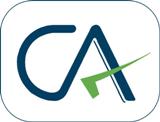INC-34, also known as e-AOA (Electronic Articles of Association), is a digital form used for company incorporation in India. It is filed with the Ministry of Corporate Affairs (MCA) under the SPICe+ (Simplified Proforma for Incorporating Company Electronically) process. The AOA is a crucial legal document that defines the internal rules and regulations governing a company’s operations. INC-34 replaces the traditional physical AOA, making the incorporation process entirely paperless. It is mandatory for private limited, public limited, one-person, and Section 8 companies registered through SPICe+. The document outlines the rights, responsibilities, and duties of shareholders and directors. It specifies how meetings, voting rights, and decision-making processes will be conducted. The AOA defines how shares can be issued, transferred, and the rights associated with them. It also includes provisions related to dividend distribution and financial management. The document ensures the smooth functioning of a company by establishing clear governance guidelines. It must be in a prescribed format and digitally signed by the subscribers. The digital signature certificate (DSC) of the subscribers and a professional (CA, CS, or advocate) is required. The e-AOA is submitted along with INC-33 (e-MOA) and other incorporation documents. It helps reduce paperwork and accelerates the registration process. Companies can customize their AOA to suit their operational needs, subject to compliance with the Companies Act, 2013. Any amendments to the AOA after incorporation require shareholder approval and filing with the MCA. It plays a critical role in resolving disputes by providing a structured framework for governance. The AOA can specify restrictions on the transfer of shares in private companies. It defines the quorum requirements for board and shareholder meetings. The document includes provisions for the appointment and removal of directors. The rights and duties of company officers are detailed in the AOA. It helps protect the interests of shareholders by outlining their rights and obligations. Financial institutions and investors review the AOA before engaging with a company. The e-AOA ensures transparency in corporate governance. Filing INC-34 correctly is crucial to avoid legal complications and registration delays. The use of e-AOA aligns with the government’s Digital India initiative to promote ease of doing business. It eliminates the need for physical stamping and notary verification, reducing costs. The digital submission ensures faster processing and approval by regulatory authorities. The adoption of e-AOA has streamlined company incorporation, making it more efficient. The AOA must align with the Memorandum of Association (MOA) to avoid conflicts. Properly drafted AOA provisions help maintain organizational stability and regulatory compliance.
